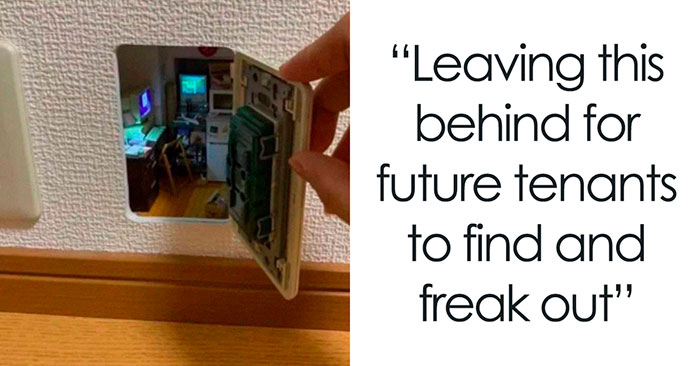
7YO Steals From A Museum, Returns The Ancient Artifact 24 Years Later
Interview With AuthorYou’d think that the place where ancient artifacts and the most important pieces of history are stored is protected with high-level security. However, stealing from museums might be easier than we think. From today’s story, it’s apparent that all it takes is putting an artifact in your pocket without anyone noticing.
This woman recently confessed that during a school trip more than 20 years ago, she pocketed an original Egyptian relic and hasn’t told a soul about it ever since. Once she shared this online, netizens urged her to return it, providing suggestions on how to do it without getting in trouble.
Scroll down to find the full story and a conversation with its author, as well as Michael A. Di Giovine, director of West Chester University’s Museum of Anthropology and Archaeology, and author of The Heritage-Scape: UNESCO, World Heritage and Tourism, who kindly agreed to tell us more about museum thefts.
Despite having high-level security, museums continue to experience thefts
Image credits: Jomkwan / freepik (not the actual photo)
As a kid, this woman was one of the thieves and has kept this secret for more than 20 years
Image credits: The Metropolitan Museum of Art (not the actual photo)
Image credits: HannaaaLucie
“I knew my parents would be extremely cross with me if they found out”
The author of the story tells Bored Panda that she remembers pocketing the Egyptian artifact because she thought it looked nice. “Bright-colored like a toy, I just wanted to take it home,” she said. She kept it a secret for so long because she was scared of getting in trouble (aren’t we all?).
“I knew my parents would be extremely cross with me if they found out,” the author shared. “Then as I got older, it was less on my mind, but then I was worried I would get in trouble if I returned it.”
After coming across the Confession subreddit, she finally decided to reveal her secret, not expecting that it would attract so much attention. “I came across the r/confessions subreddit and I was reading through other people’s confessions. I wasn’t trying to put other people’s confessions down but I thought, ‘Wow, imagine if I shared my secret.’ So naively thinking it wouldn’t get much attention, I shared mine.”
When her secret came out into the open, many readers advised returning the artifact, which luckily she did. “I took advice from one of the comments to send the artifact back anonymously via post. I went to a different city to mail the item back to the museum, just in case they tracked where it was posted from,” she shared, ending the story of a stolen artifact on a positive note.
According to Interpol, there are more than 52,000 physical artifacts missing
Image credits: NataliMilko / freepik (not the actual photo)
More established museums, like the British Museum and the Natural History Museum, have collections consisting of millions of objects, of which only a small percentage is displayed for public viewing. Unfortunately, these relics are stolen every day globally, according to Christopher Marinello, lawyer and founder of Art Recovery International, an organization specializing in finding and recovering stolen artifacts worldwide.
Interpol, which tracks items taken from archaeological sites and museums, estimates that there are more than 52,000 physical artifacts missing and no one knows where they are. Security measures like guards, video surveillance, motion detectors, bag checks, metal detectors, X-ray machines and other security devices don’t always prevent thieves from using deceptive tactics to acquire historical pieces. Occasionally, visitors pocket an artifact out of a museum or gallery, with some aiming to make a bit of money or perhaps feel a little thrill.
Since most of the focus goes to securing public displays, many museum thefts also happen from the inside by employees who have access to stored collections, notes Michael A. Di Giovine, director of West Chester University’s Museum of Anthropology and Archaeology, and author of The Heritage-Scape: UNESCO, World Heritage and Tourism.
“Storage facilities are usually not as properly or systematically monitored as gallery spaces are: security personnel is usually not “stationed” in these spaces like they are in a gallery, cameras may not be installed, collection management systems may not be up-to-date, and while there are likely good locks on the doors, “locks are for honest people,” as one of my colleagues likes to say,” explains Di Giovine.
“According to the FBI, a vast majority—around 90%—of thefts are by museum insiders themselves. I would also imagine, given this high percentage and some of the high-profile cases of curators and other museum insiders being caught with stolen artifacts, no amount of vetting and clearances can really predict or ensure with certainty that staff members will act ethically, and that this occurs across almost all levels of the institution.”
Unfortunately, most people who commit museum theft are never found. But if a person gets caught red-handed, they are usually sent to prison on a light sentence, as juries see art thefts as soft crimes.
One way to protect artifacts from theft is to catalog them
Image credits: freepik (not the actual photo)
Experts believe that the best way to protect artifacts from theft is to catalog every item museums have, with detailed descriptions and photos from every angle. However, due to the number of objects and their size, most collections aren’t fully recorded, with many of them not having their pictures. Ideally, these catalogs should have a second database that can’t be accessible to staff so they can’t alter them and things can be double-checked.
Some museums are already working to catalog all of their collections. After thefts in 2023, the British Museum was told to improve its records. It responded by agreeing to spend around £10 million to document its entire collection and put it online within 5 years
To prevent thefts, Di Giovine additionally suggests investing in security staff and technology, “but also in proper training of staff members who can ensure that best practices, particularly in accessing and monitoring artifacts in storage, are followed. Instituting a rigorous system of checks and balances, with multiple staff members aware of work done in storage facilities (including having multiple people sign off on accessing an artifact), should also be considered.”
For items that are highly susceptible to heists, especially in smaller museums with more modest security, he recommends thinking about using VR technology. “VR technology is being adopted en masse in museums for preservation and visitor engagement purposes—from organic materials that cannot be exposed for too long to artifacts that are on loan elsewhere or those whose meanings are enhanced through extended reality—museums should begin to consider (and have begun to consider) using VR instead of exhibiting rare or valuable artifacts that are at risk of damage, defacement or theft,” he explained.
“This should also be considered in areas plagued with warfare or civil unrest, as looting is also a common form of museum theft—and one of the oldest outcomes of armed conflict.”
The woman provided more information in the comments
Commenters urged the woman to return the stolen artifact to the museum
While some confessed to similar stories
Poll Question
Thanks! Check out the results:
It was probably also not wise to assemble the children and shout "CONFESS, THIEF!". If they had said "hey, one item went missing, could you please all check your bags and jackets, maybe it went on a little holiday, no biggie" and made it sound fun, OP would have felt encouraged to "find" and return it. Hell, they could have offered a fun reward. It's children, not the British Museum!
Exactly this! "Whoever took it is bad and in SO much trouble" is hardly going to get a 7 year old child to confess . . .
Load More Replies...As mentioned in the answers what sort of fool allows children that age to handle real artifacts.
They will be from the teaching collection and the calculation will be made to risk it. They won't be good enough quality to be on display, but can still be used in education. Very common practice.
Load More Replies...This happens more often than you'd think, get a lawyer to surrender the item for you. Museum will not pursue anything further.
Usually you don't need the lawyer at all, but if you want to keep it anonymous, that's the way. You could also leave it with a note for the local paper, but that depends on if you think they'll follow through and return it.
Load More Replies...It was probably also not wise to assemble the children and shout "CONFESS, THIEF!". If they had said "hey, one item went missing, could you please all check your bags and jackets, maybe it went on a little holiday, no biggie" and made it sound fun, OP would have felt encouraged to "find" and return it. Hell, they could have offered a fun reward. It's children, not the British Museum!
Exactly this! "Whoever took it is bad and in SO much trouble" is hardly going to get a 7 year old child to confess . . .
Load More Replies...As mentioned in the answers what sort of fool allows children that age to handle real artifacts.
They will be from the teaching collection and the calculation will be made to risk it. They won't be good enough quality to be on display, but can still be used in education. Very common practice.
Load More Replies...This happens more often than you'd think, get a lawyer to surrender the item for you. Museum will not pursue anything further.
Usually you don't need the lawyer at all, but if you want to keep it anonymous, that's the way. You could also leave it with a note for the local paper, but that depends on if you think they'll follow through and return it.
Load More Replies...
 Dark Mode
Dark Mode 

 No fees, cancel anytime
No fees, cancel anytime 





























































22
22